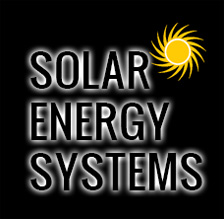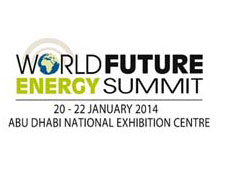 |
   |
||
Solar Energy
- world of sustainable comfort

|
|
|
HOW SOLAR ENERGY WORKS ? Depending on the way the technology captures, converts and distributes solar energy, it is called either passive solar or active solar. Passive methods are based on designing spaces that take advantage of the sun and the air circulation, using materials that utilize the heat and light of the sun and techniques like orienting the building towards the sun. Active methods are using photovoltaic panels for generating electricity directly and making use of solar thermal collectors to harness the heat for conversion into electricity indirectly. PASSIVE Using sunlight without the help of active mechanical systems is called passive solar technology. This technology converts available sunlight into usable hot air, hot water or thermal mass. It also causes air movements for ventilating. The same principles of design are used for passive cooling, to reduce or do away with mechanical requirements for cooling in summer. 
To enhance solar energy collection and to make the storage and use more efficient, some passive technologies make use of a small amount of conventional energy. Solar water heating, solar cookers, solar chimney, earth sheltering and indirect and direct solar gain for space heating are generally included in passive solar technologies. Climatology, thermodynamics, fluid mechanics / natural convection and human thermal comfort based on heat index and enthalpy control for buildings to be inhabited by humans or animals, etc form the scientific basis for these technologies. The site, location and solar orientation of the building, local sun path, the latitude, sunshine, clouds, precipitation, design and construction quality, materials, the placement, size and type of windows and walls, and solar-energy-storing thermal mass with heat capacity are considerations in making a passive solar energy building. ACTIVE 1.) Concentrating Solar Power (CSP) 
In this system, various techniques are used to track the sun and focus light on to different type of collectors like the parabolic trough, linear fresnel reflector, solar power tower, etc. These focus a large patch of sunlight into a narrow beam. Conventional power plants use this beam as a source of heat. The heat drives a heat engine, which is mostly a steam turbine. This is connected to an electrical power generator and electrical power is produced. This can be used there and then or transferred to a grid for use by others. During the three years between 2007 and 2010, 740 MW of CSP has been added to the global CSP capacity bringing the total global capacity at the end of 2010 to 1095 MW. The total capacity expected to be added to this from 2011 to 2013 is 1789 MW taking the total installed capacity by then to about 3000 MW. It was concluded in a 2003 study that 2,357,840 TWh could be generated each year from very large scale solar power plants just by using 1% of each of the world's deserts 2.) Photovoltaic Solar Energy 
In this system, solar radiation is converted into direct current electricity using semiconductors that show photovoltaic effect. Materials presently used for the photovoltaic effect include silicon, cadmium and copper. Many of these cells are combined to form a solar panel. These panels can be used individually or connected together in a solar array, depending on the amount of electricity required. The panels are mounted on a structure and the energy output is controlled by inverters and then fed into an AC grid for its own use or other utilities. 
After water and wind, solar photovoltaic energy is the third most important renewable energy source in terms of globally installed capacity. Due to advances in technology and increases in manufacturing scale, the cost of photovoltaics has been steadily declining and is now competitive with conventional sources of energy in terms of long term production costs. By the end of 2012, the 100 GW installed capacity milestone was achieved in global photovoltaic solar energy production. |
VIDEOS
EVENTS

|

 Vision
Vision

